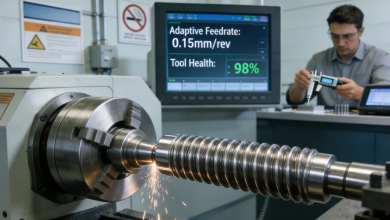The shipping and logistics industry handles much more than just paper mail and Amazon packages. Not all shipments are safe, especially when they’re in the wrong hands. Explosives are one of nine hazardous material classifications that require specialized labels and additional precautions to move them safely.
Why are companies shipping explosives, and could AI make those shipments safer?
Shipping Dangerous Cargo
Most consumers aren’t going to be receiving shipments of explosives in their mailbox or delivered to their front porch, but there is still a massive demand for these sorts of products. Commonly shipped explosives might include:
- Ammunition and gunpowder
- Hand grenades
- Dynamite
- Trinitrotoluene (TNT)
- Ammonium nitrate/fuel oil (ANFO)
- Emergency flares
- Fireworks
- Air bag inflators
- Seat belt pretensioners
- Railway fog signals
- Model rocket motors
- Water-emulsion blasting agents
Anything that could cause an explosion, regardless of the size and destructive capabilities of the event, is considered a Class 1 hazmat material.
Types of Explosive Classes
Class 1 hazmat materials are further broken down into six divisions, designated 1.1 through 1.6, that more carefully define the cargo and determine the type of placard necessary for shipment. These subclasses include:
- Division 1.1: Products classified as Division 1.1 create mass explosion hazards or a danger that could impact or even destroy the entire load. Dynamite and military hardware like torpedoes fall into this category.
- Division 1.2: Instead of a mass explosion hazard, Division 1.2 explosives create a projection hazard. This category includes ammunition, as well as detonating fuses and fireworks.
- Division 1.3: Propellants and rocket motors fall into division 1.3, defined as a fire hazard with a minor projection or explosion hazard.
- Division 1.4: Division 1.4 materials only generate a minor blast hazard. The fireworks most consumers purchase for the Fourth of July or New Year’s Eve fall into this category.
- Division 1.5: Division 1.5 includes insensitive explosives, specifically those classified as a mass explosion hazard. They are not as dangerous as sensitive substances and don’t require as much care during handling or shipping. Blasting agents and any other undefined insensitive explosive material or devices fall into this category. Mining and construction explosives are part of division 1.5.
- Division 1.6: Division 1.6 includes materials similar to those in division 1.5 without the mass explosion hazard.
Many hazardous explosive materials, such as nitroglycerine, loaded firearms, or fireworks containing white or yellow phosphorus, are also entirely illegal to ship. These items are too unstable to transport safely.
Using AI to Make Shipping Safer
Monitoring is one of the biggest challenges when safely shipping explosive materials. It’s impossible to monitor all the variables necessary to safely transport these hazardous materials in real-time without a massive team of analysts or artificial intelligence.
Incorporating the Internet of Things (IoT) into explosive packaging and shipment adds multiple layers of security to improve safety. IoT sensors can track everything from temperature and ambient humidity to acceleration, movement and even location, allowing companies to keep a careful eye on their shipments from when they leave the warehouse until they reach their destination.
These IoT systems generate a lot of raw data, which is where artificial intelligence comes in. Pairing the IoT systems with an AI network makes it easier to sort through all the data the sensors generate. From there, depending on the AI’s parameters, the network can send alerts if something is wrong and track errors or alert patterns. With enough data, these AI systems can even begin to predict future problems by studying information collected from past incidents.
Are There Any Downsides of AI in Logistics?
Artificial intelligence might sound like the perfect solution to make explosive shipping safer, but it isn’t a foolproof option. AI and the IoT sensors that act as its eyes and ears rely on a stable internet connection. Expanding the 5G network in the United States could help provide this support, but it isn’t available in many rural parts of the country.
Expansion to support AI-based shipping safety could create other problems, as researchers from the FAA found in 2022. Reports show that 5G operates on the same frequency as some aircraft altimeters, disrupting their functionality and making flying dangerous.
As with any networked system, there is also always the risk of a hack. Cybersecurity is essential for an AI network, but it becomes even more critical when dangerous explosives are involved. In the worst case, losing control of a shipping AI could deliver explosive materials into the wrong hands.
These negatives shouldn’t scare companies away from adopting AI as a tool to keep their shipments safer. It’s just important to be aware of everything that might go wrong.
Keeping Shipping Safe
Shipping hazardous materials such as explosives requires many extra precautions. Incorporating AI and the IoT might not eliminate all the risks, but it can go a long way toward keeping explosive shipments safer.




